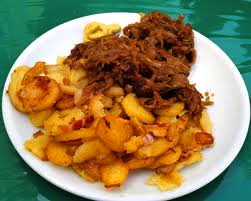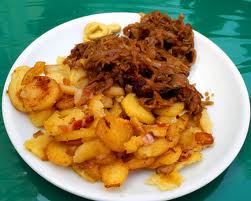German Food

German Food Culture
This is a short video of the important vegetables, meats, and dishes of germany. It also shows a few places that a person can get their food. As food is an important part of any culture, German food says a bit about their history and development as a society. When looking into the culture of their food, you see where the way they ate changed because of a change in power. When Charlemagne was in power, they would eat their meals then the women would leave to let the men drink and sing. The thirty years war left them hungry for food, and they would eat what ever they would find. Threw this video I hope, that it allows a person to gain knowledge of the food that helps to shape a culture!
Introduction to Germany and German Food By Jennifer McGavin
 German cuisine has often been labeled as stodgy and fatty, which can be attributed to the lack of variety in the rural German countryside until the last 200 years. But Germany has benefited from a close association with Italy and France and adopted many of their spices and cooking methods, always with a German twist.
German cuisine has often been labeled as stodgy and fatty, which can be attributed to the lack of variety in the rural German countryside until the last 200 years. But Germany has benefited from a close association with Italy and France and adopted many of their spices and cooking methods, always with a German twist.
Regional cuisines vary according to the geography (mountains, plains and seas are all represented) and their proximity to waterways, where transportation and trade historically took place. Left over from earlier times, preservation of foodstuffs through salting, smoking, curing or pickling is still a common way of preparing fish, meats and vegetables. Just look at the popular dishes of Matjes (pickled herring), Sauerbraten (roast beef cured in vinegar and wine), or Sauerkraut, and you will find ancient cooking methods still in use today.
 What Are the Oldest German Foods?
What Are the Oldest German Foods?
In prehistoric times German fare was likely bland. Unlike the Mediterranean countries, the growing season limited them to early forms of wheat, barley and pasture land for livestock. Sheep, cows and goats were used for milk, butter and cheese and occasionally meat products, which were served most often during feasts.
The earliest spices were parsley, celery and dill, which you still see used today. The Romans introduced fruit tree cultivation and grapevines. Oats and rye were also added into cultivation, as agricultural methods became more sophisticated. The areas around Cologne were especially rich in exotic spices and food due to its powerhouse status as a trading city.
Today, Germans still fall back on their rich heritage, serving wild game, lamb, pork and beef with old and new ways of preparing them and their side dishes. Popular spices are mustard, horseradish and juniper berries, which are found, for instance, in the Luneburger Heath. Still, modern German chefs have started to create newer, lighter fare, incorporating traditional foods into their menus.
Fun Statistics
- The Swiss have the highest per capita consumption of chocolate in the world at over 22 lbs. per annum.
- Germany no longer drinks the most beer in the world. In 2004, it ranked third behind the Czech Republic and Ireland with 116 liters per person per year (the US ranked 13th with 82 liters per person. (source).
- Hazelnuts have been used in Germany for over 11,000 years, according to archaeological pollen studies. Did they have Nutella, too?
- An asparagus field was often a valuable part of a woman’s dowry in earlier centuries.


